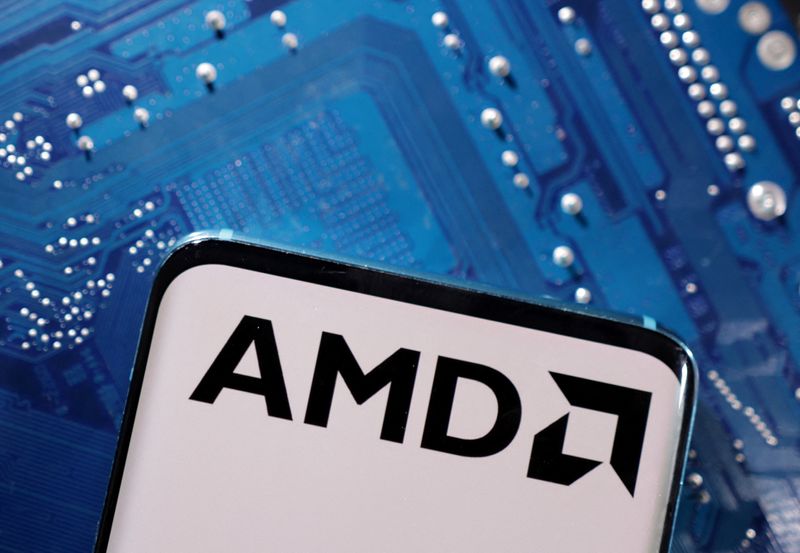Paul Tudor Jones sees potential market rally after late October
Investing.com -- HSBC analysts on Wednesday downgraded AMD (NASDAQ:AMD) stock to Reduce from Buy, and nearly halved their price target to $110 from $200, citing a less competitive AI GPU roadmap.
The analysts believe that AMD's ability to penetrate the AI GPU market may be hindered by lukewarm demand for its new MI325 GPU and potential delays in competing with Nvidia (NASDAQ:NVDA)'s NVL rack platform.
As a result, the team has lowered its forecast for AMD's AI GPU revenue in fiscal 2025 year (FY25) from $12.3 billion to $8.1 billion, which is significantly below the consensus estimate of $9.5 billion.
“AMD’s share price has corrected by 24% in the past three months but we believe there remains further downside,” HSBC analyst Frank Lee said in a note.
“We believe AMD wouldn’t be able to penetrate the AI GPU market as much as we had earlier anticipated.”
AMD shares fell nearly 3% in the Wednesday premarket trade.
The analysts expect AMD to launch its MI350 chip in the second half of 2025, in line with its roadmap. However, they believe AMD is unlikely to introduce an AI rack solution capable of competing with Nvidia’s NVL rack platform until late 2025 or early 2026, coinciding with the anticipated launch of the MI400.
HSBC's downgrade also reflects concerns over AMD's client momentum and limited upside for non-AI data center revenue in FY25. The firm expects AMD's client revenue to grow by 12% year-over-year in FY25, a deceleration from the 44% growth forecasted in FY24.
In addition to the AI GPU segment, HSBC also lowered its traditional data center server revenue estimate by 5%. While AMD is expected to continue gaining market share in server CPUs, the overall server industry growth is projected to be muted, leading to slower data center revenue growth.
HSBC's revised 2025 EPS estimate for AMD is now $4.71, a 28% reduction from previous estimates and 6% lower than consensus estimates.
The new price target of $110 is based on a lower 2025 target price-to-earnings ratio of 23x, down from 30x, reflecting the anticipated slower AI GPU revenue growth and potential further downside to analyst estimates.
